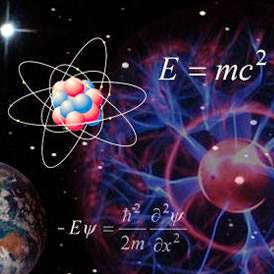A strand of the web appears to be conducting gas into the protogalaxy.
The clumpy universe we see today can be traced back to quantum fluctuations during the period of inflation, just after the Big Bang. Cosmologists think that as the universe cooled, the fluctuations seeded emerging matter that then collapsed into giant walls, and within those walls it collapsed further into filaments separated by great voids. The network of filaments, dubbed the cosmic web, is revealed—if indirectly—by astronomical surveys that show galaxies strung across the presumed filaments, with bigger galaxies and galaxy clusters at nodes where filaments intersect.
Direct observation of the filaments themselves is difficult because their constituents, mostly dark matter and cold gas, are either invisible or too faint. But with help from a quasar 10 billion light-years from Earth, Christopher Martin of Caltech and his colleagues have been able to take a close look at a strand of the cosmic web.1 The astronomers trained the Palomar Observatory’s 200-inch (5.1-meter) Hale Telescope on the neighborhood of quasar QSO UM287 and observed, illuminated by the quasar’s intense UV radiation, a cosmic-web filament attached to a rotating, actively forming galaxy.
1. D. C. Martin et al., Nature 524, 192 (2015). http://dx.doi.org/10.1038/nature14616
Physics Today:
Astronomers observe a nascent galaxy stuck to the cosmic web, Sung Chang


No comments:
Post a Comment